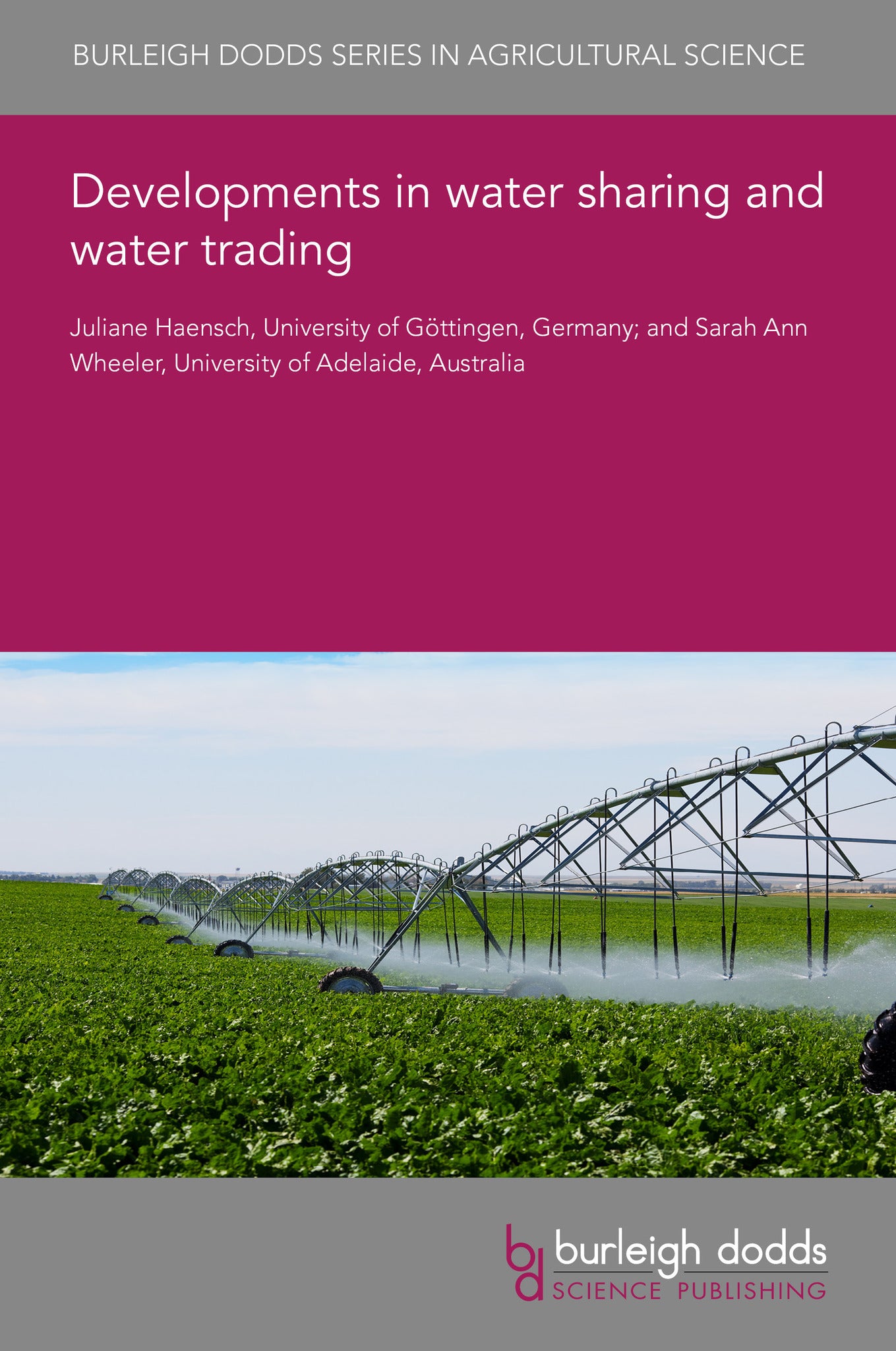We're sorry. An error has occurred
Please cancel or retry.
Developments in water sharing and water trading

Some error occured while loading the Quick View. Please close the Quick View and try reloading the page.
Couldn't load pickup availability
- Format:
-
10 June 2024

Different strategies in water management exist to deal with water scarcity issues in agriculture. This chapter provides an overview of the fundamentals and developments of two water allocation/demand management strategies, i.e. water sharing and water trading, with a focus on the Australian experience. Both water sharing and trading have been advocated worldwide for many decades. However, there is still a need today for ongoing debate, dialogue and improvements to the systems to both (a) increase adoption and implementation and (b) avoid potential adverse effects. Three major themes can be identified as a basis for successful water-allocation regimes, namely: (i) institutional/regulatory capacity; (ii) integration/stakeholder involvement; and (iii) monitoring/control systems. Considering future population growth and the projected water quantity and quality issues, functioning water sharing and water trading systems will need to be at the core of improving water management and delivering more resilient irrigation communities.

TECHNOLOGY & ENGINEERING / Agriculture / Irrigation, Irrigation and water management, TECHNOLOGY & ENGINEERING / Agriculture / Agronomy / Crop Science, TECHNOLOGY & ENGINEERING / Agriculture / Sustainable Agriculture, TECHNOLOGY & ENGINEERING / Agriculture / Agronomy / Soil Science, Sustainable agriculture, Agricultural science, Agronomy and crop production

- 1 Introduction
- 2 Developments in water-sharing concepts
- 3 Fundamentals of and developments in water trading
- 4 Case study: Australias MurryDarling Basin
- 5 Conclusion
- 6 Where to look for further information
- 7 References



